LIST OF DOWNLOADABLE MONOGRAPHS
The last and the largest of Britain’s post-war new towns, the city of Milton Keynes was designated in 1967, covering an area of 82 square kilometres in north Buckinghamshire.
Between 1971 and 1991, archaeological excavation and fieldwork was carried out in advance of the development within the city by the Milton Keynes Archaeology Unit. This was set up and funded by Milton Keynes Development Corporation.
The scale of development in the area during this time provided an unprecedented opportunity for the study of historic landscape of the area, and sites of all periods have been examined in detail.
The results of this work were published between 1987 and 1995 through the Buckinghamshire Archaeological Society as a series of monographs on major excavations or related studies. They are now republished here as digital copies. Some smaller excavations appeared in the Society’s Journal, Records of Buckinghamshire.
The following are the reports now available to download. Some volumes are still available to purchase as printed copies. See their availability at http://www.bucksas.org.uk/publmonographs.html

No 1 Roman Milton Keynes, Excavations & Fieldwork 1971 – 82
Editor: Dennis C. Mynard
Buckinghamshire Archaeological Society 1987.
Detailed reports on the results of the Unit’s early investigations during 1971 to 1982 into Roman sites in the new city, with an in-depth essay on Roman occupation and activity in the region and a gazetteer of sites in Milton Keynes. A report on the pottery finds is the subject of Volume 2.
>>

No 2 Roman and Belgic Pottery
by P.T. Marney
Pub. Buckinghamshire Archaeological Society 1989.
The companion to volume 1, this was the first-ever published study of Roman pottery undertaken on a regional basis in Britain. It still forms the basis for the identification and analysis of Roman ceramics in Milton Keynes and surrounding counties.
>>
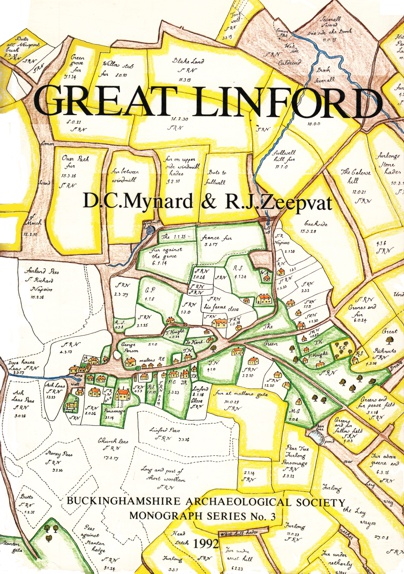
No 3 Excavations at Great Linford, 1974-80
The Village by D. C. Mynard & R. J. Zeepvat
The Church by R. J. Williams
Pub. Buckinghamshire Archaeological Society 1991.
One of the first detailed village studies undertaken in Britain, bringing together the wealth of archaeological and historical evidence relating to the village of Great Linford, its manor, church and mill. Also contains the definitive study of medieval pottery for Milton Keynes.
>>
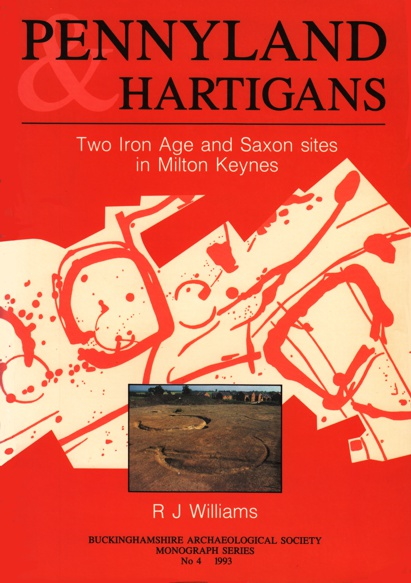
No 4 Pennyland and Hartigans
Two Iron Age and Saxon sites in Milton Keynes
by R. J. Williams
Pub. Buckinghamshire Archaeological Society 1993.
Settlement at Pennyland began in the Iron Age and recommenced in the Saxon period, as a precursor to Great Linford. Hartigans gravel pit was located in the Ouzel valley and produced a wealth of evidence for prehistoric and Saxon activity predating the village of Middleton.
>>

Volume 5 The Changing Landscape of Milton Keynes
by R.A. Croft and D.C. Mynard
Pub. Buckinghamshire Archaeological Society 1993.
A detailed overview of the history and archaeology of the original 18 civil parishes within the new city, with period-based essays on the landscape, a study of place-names in the area and individual parish essays
>>Also with this volume but separate are 11 individual large format maps each of which can be down loaded
>>
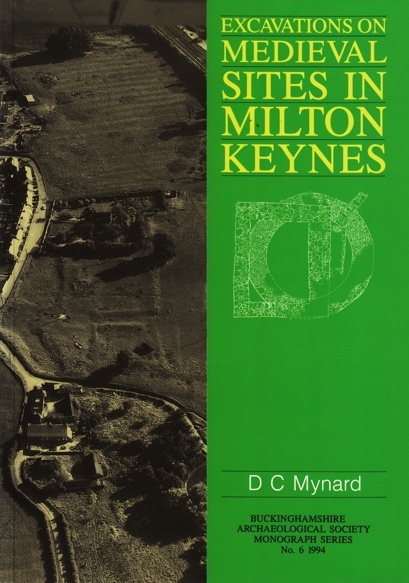
No 6 Excavations on Medieval and later sites in Milton Keynes 1972-1980
by D C. Mynard
Pub. Buckinghamshire Archaeological Society 1994.
Reports from excavations undertaken by the Unit on medieval and post-medieval sites at Bradwell, Walton, Willen and Woughton, investigations in Little Woolstone Church and the structural recording and excavation of a barn at Simpson.
>>

No.7. Bancroft (in two volumes)
A late bronze and iron age settlement, Roman villa and temple mausoleum
– by RJ Williams and RJ Zeepvat
Pub. Buckinghamshire Archaeological Society 1994.
Volume 1. A detailed account of the excavations and investigations on related sites at Blue Bridge and Bancroft Park, demonstrating nearly 1000 years of continuity from the Bronze Age to the end of the Roman period.
On Blue Bridge, discoveries include a large Bronze Age roundhouse, Iron Age dwellings, Roman cremation and inhumation cemeteries and an impressive temple/mausoleum.
The villa, in the neighbouring valley, was represented by two successive houses, the first accompanied by farm buildings, yards and walled gardens. The later house was of high status, with bath suites, mosaics and fronted by a formal garden with a central fish pond.
Volume 2. Detailed description of the finds and the enviroment aspects. The excavations produced a wealth of architectural finds, artefacts and ceramics, as well as environmental evidence.
>>
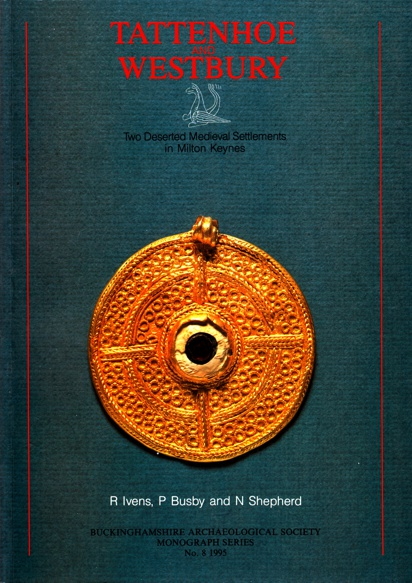
No.8. Tattenhoe and Westbury
Two deserted medieval settlements
– by R Ivens, P Busby and N Shepherd
Pub. Buckinghamshire Archaeological Society 1995.
The excavation of two extensive deserted village sites in the south-western quarter of Milton Keynes. As well as the village, the excavations revealed a small middle Saxon inhumation cemetery.
Due to the size of this volume, over 500 pages, it has been necessary to digitise it in two parts. The firsts covers the excavation and the second details the finds.
>>
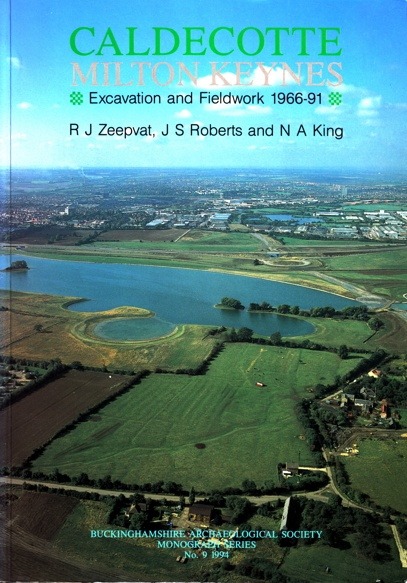
No 9 Caldecotte, Excavations and Fieldwork at a deserted medieval village site 1966-91
by R. J. Zeepvat J. S. Roberts and N.A.King
Pub. Buckinghamshire Archaeological Society 1994.
This volume details the results of the archaeological examination over some 24 years of a range of sites of different periods in the Caldecotte area. As well as extensive areas of late Iron Age and Roman activity, sites include a medieval moat and village and a post-medieval mill.
>>
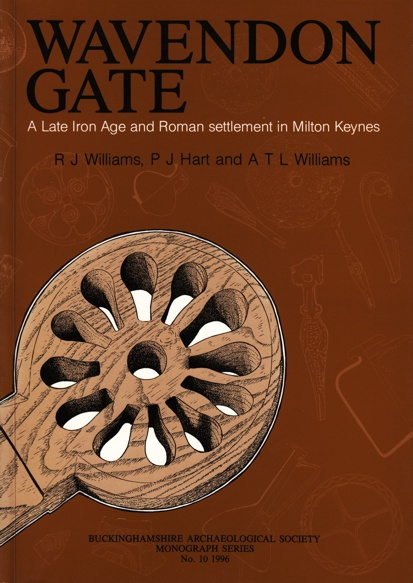
No 10. Wavendon Gate.
A late iron age and Roman settlement
by RJ Williams, PJ Hart and ATL Williams
Pub. Buckinghamshire Archaeological Society 1995.
Undertaken largely as a result of chance finds, excavations at Wavendon Gate revealed an extensive late Iron Age and early Roman settlement including pottery kilns, an inhumation cemetery and a large ritual pit in which were preserved a wealth of wood and leather artefacts.
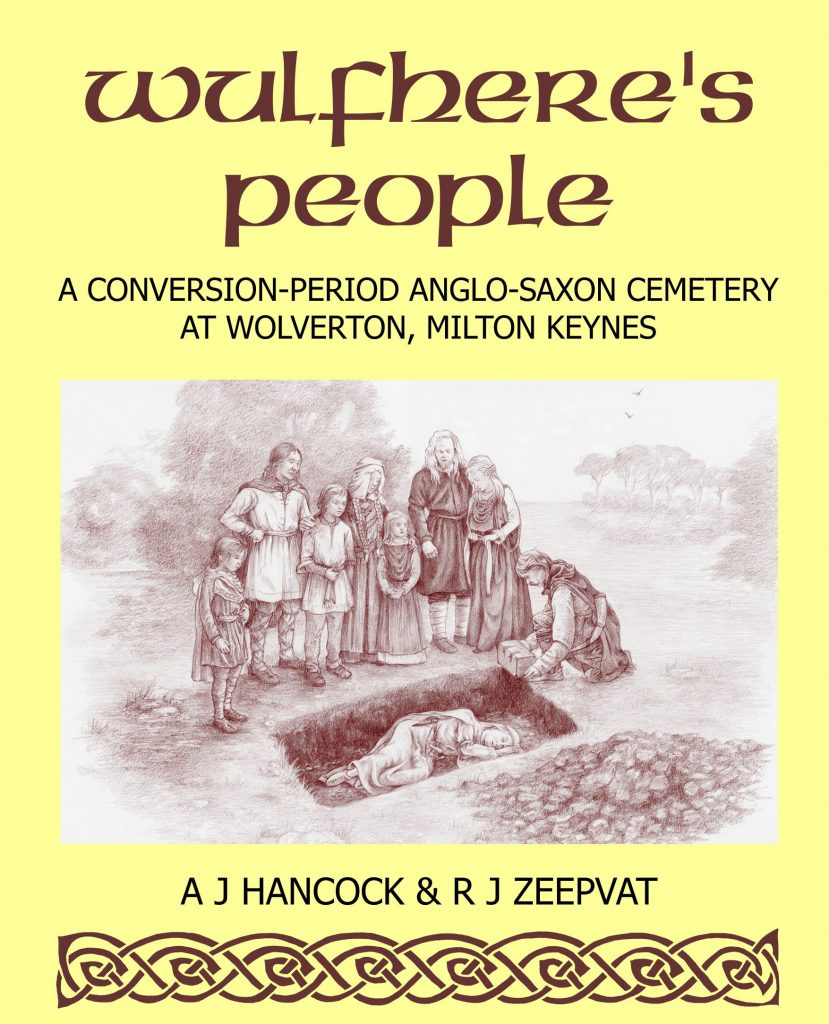
No 11. Wulfhere’s People.
A conversion-period Anglo-Saxon cemetery in Wolverton
by A Hancock and R Zeepvat
Pub. Buckinghamshire Archaeological Society 2008
Wolverton’s Anglo-Saxon cemetery was the largest yet discovered in Buckinghamshire: 83 people, village people who worked the land: their most common ailment was osteoarthritis from hard physical labour. They lived in ‘Wulfheres Tun’, from which comes the modern name of Wolverton.
>>
